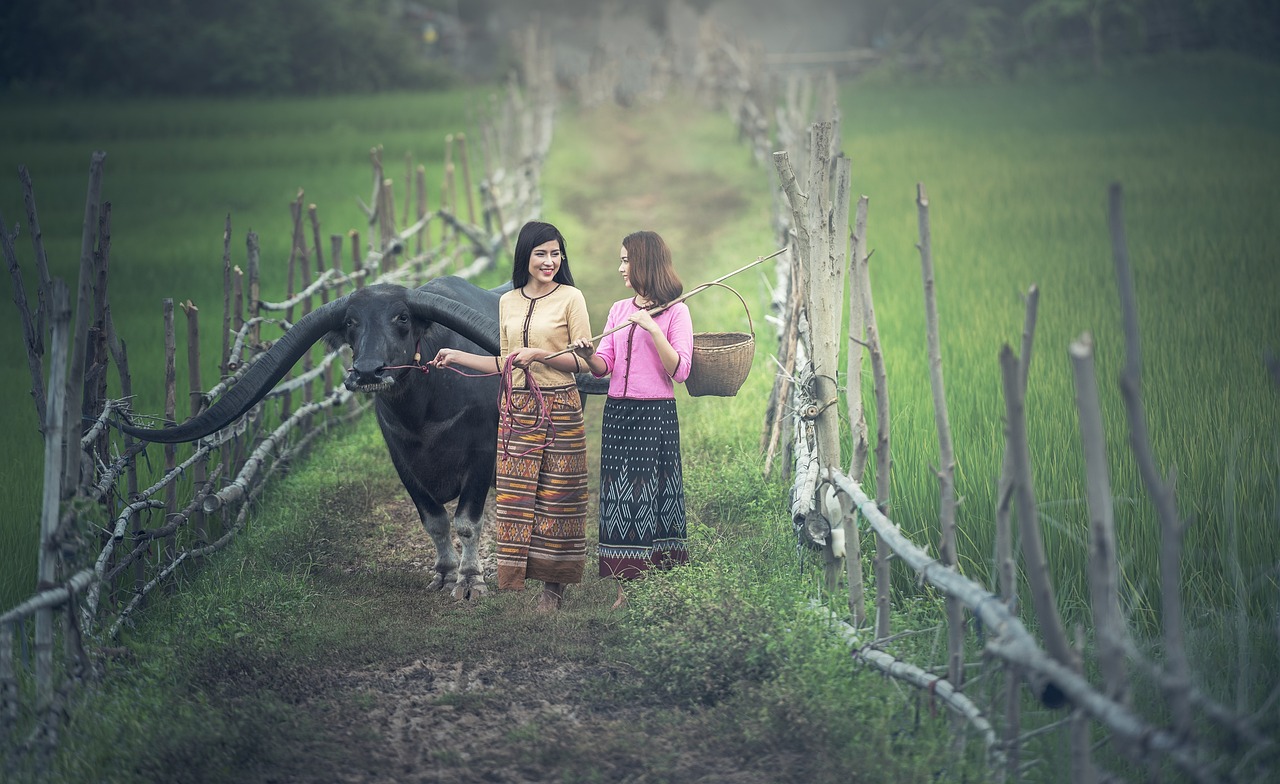Thailand is a country known for its rich cultural heritage and vibrant arts scene. From traditional crafts to contemporary art forms, Thailand offers a wide range of local arts and hobbies that are worth exploring. In this article, we will delve into various aspects of Thailand’s local arts and hobbies, providing detailed information on each topic. So, let’s embark on a journey to discover the artistic side of Thailand!
Thai Traditional Crafts
Thai traditional crafts are deeply rooted in the country’s history and cultural traditions. These crafts showcase the creativity and craftsmanship of Thai artisans. Here are some notable traditional crafts in Thailand:
- Thai Silk: Thai silk is renowned worldwide for its exquisite beauty and quality. It is hand-woven using traditional techniques and comes in a wide array of vibrant colors and intricate patterns.
- Wood Carving: Thai wood carving is a traditional craft that involves intricate carving techniques on wood. It is commonly used in the creation of decorative items, furniture, and architectural elements.
- Pottery: Thai pottery has a long history and is known for its unique designs and glazes. From functional tableware to decorative pieces, Thai pottery showcases the skill and creativity of local artisans.
- Lacquerware: Thai lacquerware is a traditional craft that involves applying layers of lacquer to create decorative and functional items. The process includes intricate designs and often incorporates gold leaf embellishments.
Traditional Thai Dance
Traditional Thai dance is a captivating art form that has been passed down through generations. It combines graceful movements, elaborate costumes, and traditional music to tell stories and convey emotions. Here are some popular traditional Thai dances:
- Khon: Khon is a classical dance-drama that depicts episodes from the Ramakien, the Thai adaptation of the Indian epic, Ramayana. It involves intricate choreography, colorful costumes, and expressive masks.
- Thai Classical Dance: Thai classical dance encompasses various styles, including the graceful court dance known as Fawn Thai. It emphasizes precise movements, hand gestures, and facial expressions.
- Luk Thung Dance: Luk Thung is a popular folk dance that originated from Thailand’s rural areas. It is characterized by lively movements and energetic music, often accompanied by singing.
Thai Martial Arts
Thai martial arts, also known as Muay Thai, is a combat sport that has gained international recognition. It combines striking techniques with clinching and grappling maneuvers. Here are some key aspects of Muay Thai:
- Techniques: Muay Thai involves the use of punches, kicks, knee strikes, and elbow strikes. It emphasizes powerful and precise strikes, making it a highly effective form of self-defense.
- Training: Training in Muay Thai involves rigorous physical conditioning, including strength and endurance exercises. It also focuses on developing proper technique and sparring with training partners.
- Competitions: Muay Thai competitions are held regularly in Thailand, ranging from local events to international tournaments. These competitions showcase the skills and techniques of professional fighters.
Contemporary Thai Art
Thailand’s contemporary art scene has been flourishing in recent years, with a diverse range of artists pushing boundaries and exploring new artistic expressions. Here are some notable aspects of contemporary Thai art:
- Street Art: Thai cities, especially Bangkok, are adorned with vibrant street art. Talented local artists use public spaces as their canvas, creating visually stunning murals and graffiti.
- Art Galleries: Thailand is home to numerous art galleries showcasing contemporary artworks. These galleries feature a wide range of mediums, including painting, sculpture, installation art, and mixed media.
- Art Festivals: Thailand hosts various art festivals throughout the year, providing a platform for local and international artists to showcase their works. These festivals often include exhibitions, performances, and workshops.
Thai Traditional Music
Thai traditional music is an integral part of the country’s cultural heritage. It encompasses a wide range of musical instruments, styles, and genres. Here are some notable aspects of Thai traditional music:
- Traditional Instruments: Thai traditional music utilizes a diverse range of instruments, including the khim (hammered dulcimer), pi (oboe-like instrument), ranat ek (Thai xylophone), and saw duang (two-stringed fiddle).
- Classical Music: Thai classical music, known as Mahori or Piphat, is often performed at royal ceremonies and traditional events. It combines intricate melodies, rhythmic patterns, and ensemble playing.
- Muay Thai Music: Muay Thai fights are accompanied by traditional music, played on instruments such as the pi chawa (small oboe) and the klong khaek (drum). The music adds to the atmosphere and energy of the fights.
Thai Culinary Arts
Thai cuisine is renowned worldwide for its bold flavors, vibrant colors, and unique combination of ingredients. Thai culinary arts reflect the creativity and passion of Thai chefs. Here are some highlights of Thai culinary arts:
- Regional Cuisine: Thailand’s diverse regions have their own distinctive culinary traditions. From the fiery flavors of northeastern Isaan cuisine to the delicate and aromatic dishes of southern Thai cuisine, each region offers unique culinary experiences.
- Street Food: Thailand is famous for its street food culture. Street vendors offer a wide variety of dishes, including pad Thai, green curry, mango sticky rice, and tom yum soup. Exploring the bustling street food markets is a must for any food lover.
- Cooking Classes: Many cooking schools in Thailand offer classes for visitors to learn the art of Thai cooking. These classes provide hands-on experience in preparing authentic Thai dishes using traditional techniques and ingredients.
Thai Traditional Festivals
Thai traditional festivals are vibrant and colorful celebrations that highlight the country’s cultural traditions and religious beliefs. Here are some well-known Thai festivals:
- Songkran: Songkran is the Thai New Year festival, celebrated in April. It is known for its water fights and is a time for family reunions and paying respects to elders.
- Loi Krathong: Loi Krathong is a festival held in November, where people release floating lanterns and decorative floats made of banana leaves into rivers and lakes to pay respects to the water spirits.
- Yi Peng: Yi Peng is a festival celebrated in northern Thailand during the same period as Loi Krathong. It is known for its mesmerizing display of thousands of floating lanterns in the night sky.
Thai Traditional Massage
Thai traditional massage, also known as Nuad Thai, is a therapeutic practice that combines acupressure, stretching, and assisted yoga postures. Here are some key aspects of Thai traditional massage:
- Techniques: Thai massage involves applying pressure to specific points along energy lines in the body, combined with stretching and passive yoga-like movements. It aims to stimulate energy flow and promote relaxation.
- Benefits: Thai massage is believed to provide various health benefits, including stress reduction, improved circulation, increased flexibility, and relief from muscle tension and pain.
- Spa Experiences: Thailand is renowned for its spa and wellness centers offering traditional Thai massage. Visitors can indulge in therapeutic treatments that rejuvenate the body and mind.
Thai Traditional Costume
Thai traditional costumes are elegant and distinctive, reflecting the rich cultural heritage of the country. Here are some notable Thai traditional costumes:
- Chut Thai: Chut Thai refers to traditional Thai clothing, which varies depending on the region and occasion. It often includes a pha nung (wrap skirt) for women and a pha chong kraben (sarong-like garment) for men.
- Pha-Sin: Pha-Sin is a traditional Thai skirt made of silk or cotton. It is intricately woven and often features vibrant colors and intricate patterns.
- Pha-Ma: Pha-Ma is a traditional Thai shawl or sash that can be worn with various types of Thai clothing. It adds a touch of elegance and can be used as an accessory or a decorative element.
Thai Language and Calligraphy
The Thai language and calligraphy play an important role in Thai culture. Here are some aspects of the Thai language and calligraphy:
- Thai Alphabet: The Thai alphabet consists of 44 consonants, 15 vowel symbols, and various tone markers. Learning the Thai alphabet can be a fascinating journey into the language and culture of Thailand.
- Thai Script: Thai script is a beautiful and intricate writing system. Thai calligraphy is a revered art form, and its elegant strokes can be seen in various religious texts, temple murals, and decorative items.
- Thai Phrases: Learning basic Thai phrases can enhance your travel experience in Thailand. Locals appreciate visitors who make an effort to communicate in their language.
Thailand Image 1:

Thailand Image 2:

Thailand Image 3:

Conclusion
Thailand’s local arts and hobbies offer a fascinating glimpse into the country’s rich cultural heritage. Whether you’re interested in traditional crafts, dance, martial arts, contemporary art, music, culinary arts, festivals, massage, traditional costumes, or language and calligraphy, Thailand has something to offer. Exploring these aspects of Thai culture will not only deepen your understanding of the country but also provide memorable experiences. So, immerse yourself in Thailand’s local arts and hobbies and discover the beauty and creativity that abound.
References
– Tourism Authority of Thailand: www.tourismthailand.org
– National Museum Bangkok: www.nationalmuseums.finearts.go.th
– Thai Silk Company: www.thaisilk.com
– Thai Arts and Crafts: www.thaiartsandcrafts.com
– Muay Thai Authority: www.muaythaiauthority.com
– Contemporary Art in Thailand: www.contemporaryartinthailand.com
– Thailand Cultural Center: www.thailandculturalcenter.org
– Thai Traditional Music: www.thaitraditionalmusic.com
– Ministry of Culture Thailand: www.culture.go.th
– Thai Cooking School: www.thaicookingschool.org
– Tourism Authority of Thailand: www.tourismthailand.org
– Thai Massage School: www.thaimassage-school.com
– Thai Traditional Costume: www.thaicultural.co.th
– Learn Thai Language: www.learn-thai-language.com
– Thai Calligraphy: www.thaicalligraphy.com

